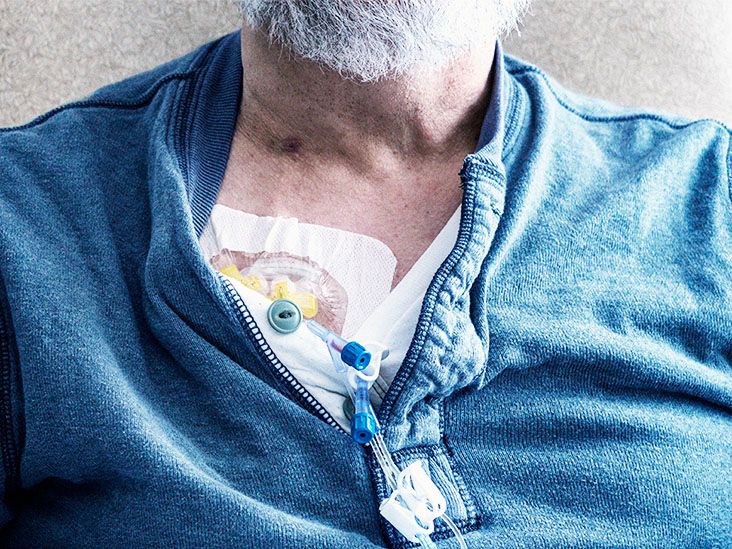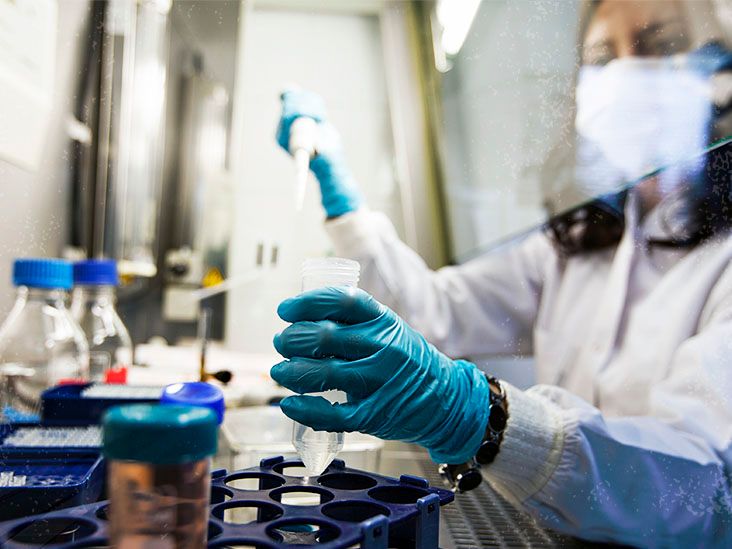Diffuse large B cell lymphoma (DLBCL) is a cancer that affects white blood cells called B cell lymphocytes. Ordinarily, these cells help protect against infection and disease.
In DLBCL, abnormalities within the B cell lymphocytes mean the cells no longer develop and function as they should. These irregular cells quickly proliferate in the lymphatic system, causing complications.
This article discusses DLBCL, including the different subtypes. It also outlines its symptoms, causes, and stages alongside treatment options.

DLBCL is a type of cancer that affects white blood cells called lymphocytes. There are two main types of lymphocytes: B cell lymphocytes (B cells) and T cell lymphocytes (T cells). DLBCL affects B cells.
B cells produce proteins called antibodies, which attach to bacteria and viruses. These antibodies signal to the immune system to destroy and eliminate pathogens.
DLBCL accelerates the reproduction rate of B cells to such an extent that the cells no longer develop or function as they should. Compared with healthy B cells, these faulty B cells are larger and accumulate in the lymph nodes, causing the lymph nodes to swell.
DLBCL is a type of non-Hodgkin’s lymphoma (NHL). It is the most common NHL, accounting for around 85% of these lymphomas.
Medical professionals
According to the American Cancer Society,
The outlook for this form of cancer depends on:
- the type of DLBCL a person has
- the stage that it has progressed to
- whether a person receives treatment for it
DLBCL can originate inside the lymph nodes or in an organ outside the lymph nodes. Medical professionals refer to different subtypes of DLBCL according to where or how they originated:
- Primary DLBCL of the central nervous system: Refers to DLBCL originating in the brain or the eye.
- Primary cutaneous DLBCL: Refers to DLBCLs that typically appear as red or bluish-red tumors on the skin. They may develop anywhere on the body, including:
- the torso
- the buttocks
- the arms
- the legs
- Primary mediastinal B-cell lymphoma: A DLBCL that
originatesTrusted Source in the mediastinum. This is the area in the center of the chest, which contains the following structures:- the heart
- the thymus gland
- sections of the windpipe and esophagus
- T-cell/histiocyte-rich B-cell lymphoma: A form of DLBCL that has the following characteristics when viewed under a microscope:
- a few scattered large and atypical B cells
- numerous normal T cells
- numerous histiocytes, which are another type of immune cell
- Epstein-Barr virus (EBV)-positive DLBCL: A form of DLBCL that usually occurs in people ages 50 years or older and test positive for EBV.
- DLBCL not otherwise specified (NOS): DLBCL that does not fall into one of the above subtypes. In Western countries, 25% to 30% of NHLs in adults are DLBCL-NOS. This percentage is higher in developing countries.
- Stage 1: The cancer affects only one area — either a single organ or a single cluster of lymph nodes.
- Stage 2: The cancer affects two or more areas on the same side of the diaphragm.
- Stage 3: The cancer affects areas on both sides of the diaphragm.
- Stage 4: The DLBCL has spread to organs outside the lymphatic system, such as the lungs or bones.
Doctors may also use the following letters to further describe the stages of DLBCL:
- A: The person has DLBCL but is not experiencing any symptoms of the disease.
- B: The person has DLBCL and has one or more “B symptoms.”
- E: The DLBCL has spread beyond the lymphatic system.
- S: The DLBCL is present in the spleen.
The treatment for DLBCL depends on where in the body the cancer originated and the extent to which it has spread. DLBCL is an aggressive cancer, so doctors
The most common treatment protocol for DLBCL is
- Rituximab: A monoclonal antibody that helps reduce the number of B cells in circulation.
- Chemotherapy drugs: These three drugs help slow or stop the growth of cancer cells:
- cyclophosphamide
- doxorubicin
- vincristine
- Prednisone: A steroid medication that helps increase the effectiveness of chemotherapy while reducing some of its side effects.
Most people with DLBCL following the R-CHOP protocol need between
Around
People who do not achieve the desired outcome of the initial treatment may receive further chemotherapy cycles using different drug combinations.
Following successful treatment, there is a risk that DLBCL will
Experts do not yet know the
- Older age: DLBCLs are more common in older people.
- Being male: Males are slightly more susceptible to DLBCL than females.
- Genetics: A person who has a close relative with DLBCL may be at increased risk of developing the disease themselves.
- Prior infections: Certain infections can increase the risk of developing DLBCL, including:
- human T-cell leukemia/lymphoma virus (HTLV-1)
- EBV, which causes mononucleosis, or glandular fever
hepatitis CTrusted Source - HIV
- Having a low grade NHL: Rarely, a low grade lymphoma can transform into a high grade lymphoma, such as DLBCL.
It is important to remember that having one or more risk factors for DLBCL does not mean a person will develop the disease. Equally, people without any risk factors can still develop DLBCL.
People with DLBCL typically experience inexplicable but painless swelling in one or more lymph nodes. These swellings can appear in any part of the body but are more common in the following areas:
- the neck
- the armpit
- the groin
People may experience additional symptoms, known as B symptoms. Examples include:
- severe night sweats
- unexplained fever
- sudden and dramatic weight loss
- overwhelming fatigue
- bloating due to a swollen liver or spleen
A person who experiences symptoms of DLBCL should consult a doctor as soon as possible.
Diffuse large B cell lymphoma (DLBCL) is a type of non-Hodgkin’s lymphoma that affects B cell lymphocytes. The disease can originate in any part of the body and generally causes a painless swelling in one or more lymph nodes.
While DLBCL is an aggressive cancer that grows and proliferates rapidly, it responds well to treatment. The typical treatment protocol for DLBCL is R-CHOP, which combines different drugs to help slow or stop the growth of cancerous lymphocytes.
Treatment for DLBCL is typically more successful during the earlier stages of the disease. Therefore, people who experience symptoms of DLBCL should contact a doctor as soon as possible for a diagnosis and appropriate treatment.



